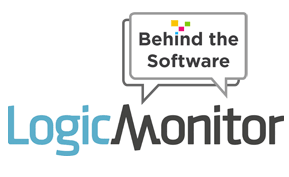IT Asset Management
IT Infrastructure Monitoring
iQuate Monitors Your Network's Inner Workings

Keeping track of IT assets on a big network is challenging enough; monitoring all your applications and software license compliance to boot seems impossible. iQuate, however, does just that, bringing visibility to virtually everything happening on an enterprise-grade network. Founder and CTO Jason Keogh talked to us about the ways iQuate can be a cost saver for any business.
What was the inspiration behind starting iQuate? Did you see needs that weren’t being met, or existing needs you could address better?
I think the best ideas are the ones that come from direct personal experience. My inspiration for iQuate began at a companywhere I worked which had several hundred servers spread across India, the U.S. and Ireland. Basically, I needed a full view ofour assets in relation to hardware and software – what ran where.
I went looking for a tool that could help me do that and couldn’t find one that met some fairly basic prerequisites, one of which was getting the data quickly. This couldn’t be a six-month project, and I didn’t want to install anything on all the machines in order to do it. I wasn’t even sure if I could list all the machines I had, never mind with complete accuracy. Even if I could, then installing things on machines was going to be a pain and take too long, based on my options at the time.
Other than software licensing compliance what are some of the benefits an organization could get from deploying something like iSonar on their network?
Well, the primary one is cost savings. We help people understand what is where in your network- if you do that you can understand your costs. If you understand your costs, you can start reducing them. As well as gathering the details required to properly understand complex data center costs, we are enabling cost reductions by providing analytics for iQSonar data that helps you to spot patterns in the way the things are deployed and encourages centralization and transformation.This can have a massive impact on costs, risk, and license compliance. Security is another area which benefits. People need to know what’s on their networks in order to make sure that their data is secure.
Are there many other developers that are providing this same sort of monitoring and analytics technology? If not, why do you suppose there aren’t a lot of competitors in this field?
There are plenty of companies out there who claim to do similar things to what we do, but what they don’t do is where we focus. The majority of tools will tell you what is running where. We go beyond that, we get inside of things, what we call Measurement. We show you that if you have 5,000 servers you know exactly how many of them are running Oracle. The Measurement piece is critical,this will tell youabout the Oracle edition, the options, the packs, how they are configured, if they need licenses and what’s running or configured inside the database. Likewise, if you know 50 servers run WebSphere for IBM, you may not need WebSphere licenses because you’re probably going to have licenses for the products running outside of it. So the difference is we go inside the application servers like WebLogic and WebSphere to find out what apps are running in those platforms. That way we can establish what licenses you actually need.
Your customer anecdotes have some dramatic revelations about how large company networks are managed. With the way IT infrastructure has grown why hasn’t been a concurrent emphasis on asset management? Or has there been?
Well, one thing is that there has been a huge upswing in IT asset management as a business. As a matter of fact, I was recently at an IT management conference in Orlando and they were predicting that by 2015 the amount of money spent by end-user organizations on enterprise IT will reduce. However, the amount of money spent on managing those networks will increase, so, in other words, in a market where the costs are being reduced, the cost of management will increase.
What that means is that this area is one of the few areas of growth that exists in enterprise IT over the next 3-5 years. To answer your question, when setting up datacenters and consolidating them, configuring them, and managing them, IT operations folks are primarily tasked with making sure that–I’m going to use a blunt term–”this s*** stays up.” You do not want it to go down. That is their job and that is their neck on the line if mission-critical functions go down. Their job is not to manage costs, it’s to manage availability, capacity and performance. Cost control has not typically been the focus, however with the market as it has been for the past two or three years, and the continuing emphasis on reducing IT costs, that role is growing.
Have you seen any strong correlations in which sorts of industries are approaching for your services and has that affected your business strategy at all?
No, we haven’t really. We have customers across logistics, financial services, manufacturing, electronics… If you take our top three customers they are in three completely different industries. That’s because the nature of what we do relates to technology in general rather than a specific vertical. We focus on any organization that has complex networks. Some are more compliance-oriented, such as banking and biotech, but logistics companies like DHL have the same problems.
Do you find it’s a challenge selling customers on a third-party solution that monitors their networks so closely? Are there misconceptions about security?
We don’t find that is an issue because we help strengthen security rather than weaken it. We can assure prospective clients that it will absolutely do no harm. We talk about their environment and show that they will improve by using iQSonar. We have been in IT environments that are extremely messy and we have lots of stories we can share.We have experience managing networks for military organizations where they have built complete network isolation, where they are not connected to the internet, not connected to one another. We have experience dealing with massive networks, covering over 3,000 locations and 250,000 devices. That level of complexity can be managed from one location, but only with a lot of co-operation between the network guys, the security guys and different areas of IT operations.
What is the biggest challenge that you are currently facing either business wise or technology wise and how are you addressing it?
Our biggest challenge is actually making people aware that it is possible to gather the sort of data we gather on the scale we do, and the savings that can be driven from that.
A lot of people have been frustrated in this area for a long time and are compelled purely to try and maintain compliance because they haven’t had the tools to actually drive down costs.They see transformational change as very risky.
We can enable transformational change by reducing the risk. To highlight the value of doing so and get that message to the right ears and the right sort of organizations is our biggest challenge as a business.
Where do you see your segment in the next 5 years? What sort of challenges and opportunities do you see on the horizon?
I think controlling cost in the data center will be a driver over the coming years. Two years ago most people didn’t think this was a problem, or were scared to address the issue. A year ago perhaps 30 percent or 40 percent of people began to nod their heads and say “Yeah, you’re right. We need to focus on what is going on in the datacenter.”.Now perhaps 80 percent of people are nodding their heads. This revelation is a great opportunity for us.
In terms of challenges, while we cover many key areas of technology spend, with the rate of change in technology, there are always many more to be covered. What we have done over the past number of years is to build a platform which lets us rapidly extend our data gathering capabilities. We are extending the iQuate platform and building a software company that can react rapidly to new customer requirements.
Want more information on the best IT management software solutions?
We’ve compiled the top product reviews, blog posts and premium content on our IT management software research page. Here you’ll find all the information you need to choose the right IT solution. Also, be sure to compare leading IT asset monitoring products in our Top 10 IT Asset Management Software report.





